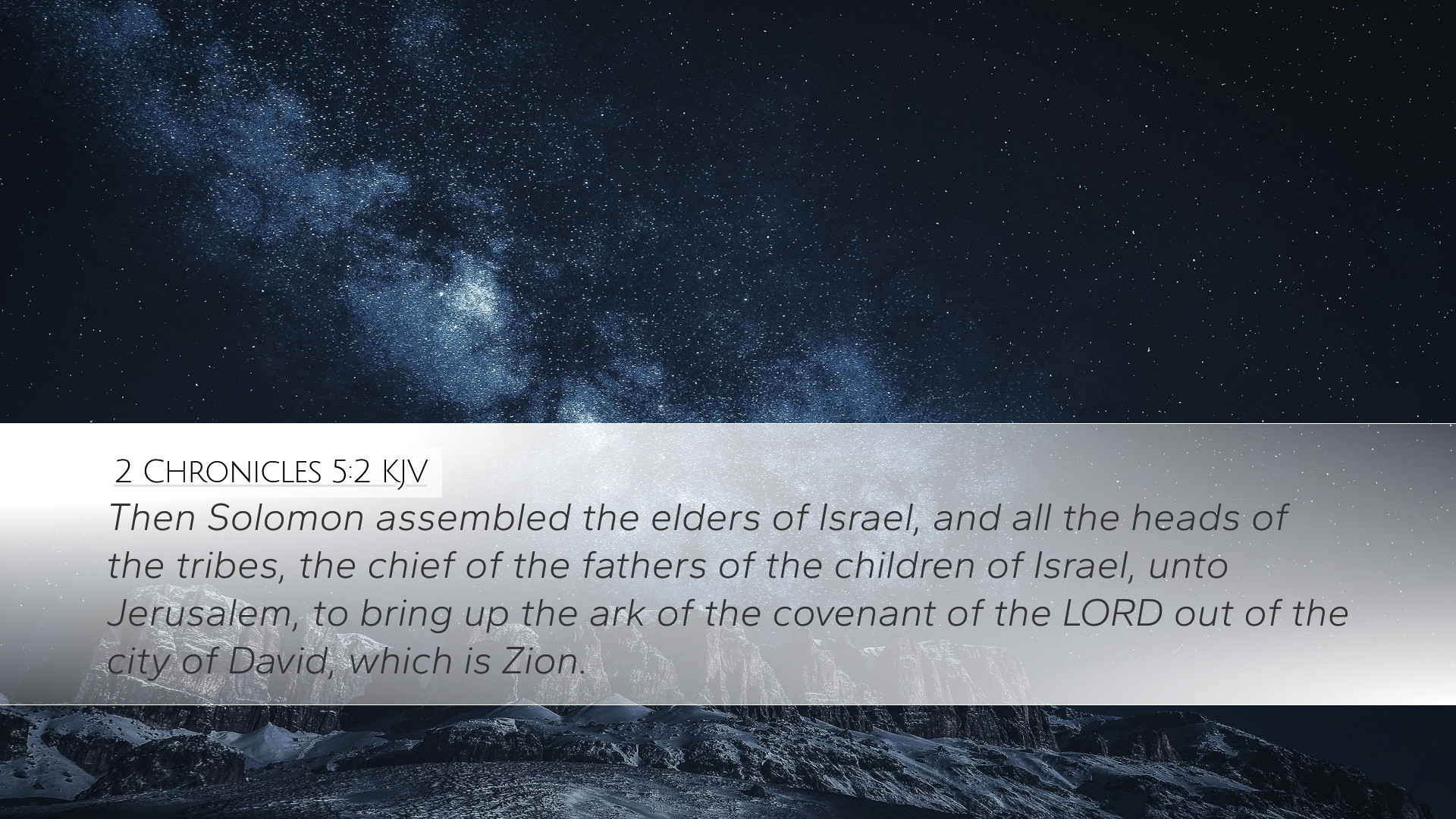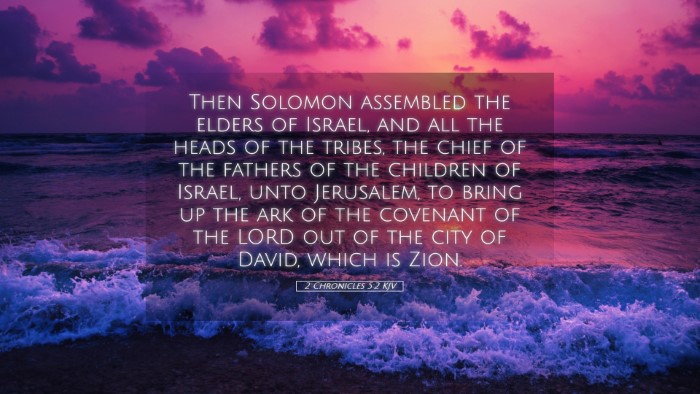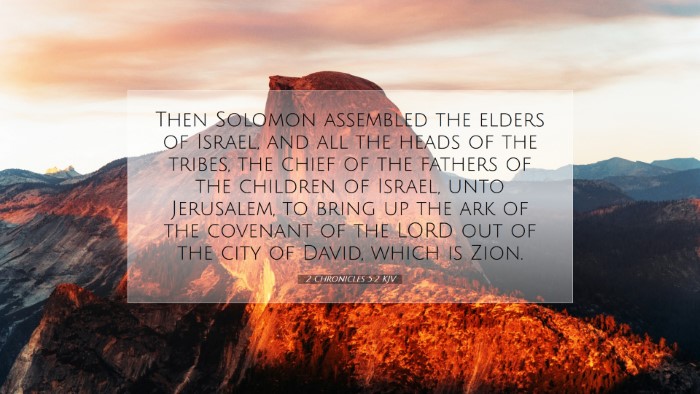Commentary on 2 Chronicles 5:2
2 Chronicles 5:2 states: “Then Solomon assembled the elders of Israel and all the heads of the tribes, the chief fathers of the children of Israel, unto Jerusalem, to bring up the ark of the covenant of the Lord out of the city of David, which is Zion.” This verse marks a significant moment in the history of Israel, as it describes the gathering of the nation’s leaders to bring the Ark of the Covenant into the temple that Solomon had built. Below we will delve into the insights provided by notable public domain commentators such as Matthew Henry, Albert Barnes, and Adam Clarke.
Contextual Background
The context of this verse is crucial for understanding its implications. Solomon had recently completed the construction of the Temple, a task of great national significance. The Ark represented the presence of God among His people, thus its relocation from the city of David (Zion) to the Temple in Jerusalem was both a physical and spiritual act.
Analysis of the Verse
1. Assembly of Leaders
Matthew Henry comments on the importance of the assembly of elders and tribal leaders, stating that this gathering signifies unity and a collective responsibility among the leaders of Israel. This act of coming together emphasizes the communal nature of worship and the role of leadership in spiritual matters.
2. Symbolism of the Ark
Albert Barnes elaborates on the significance of the Ark itself. He notes that the Ark contained the tablets of the Law, symbolizing God's covenant with Israel. By bringing the Ark to the Temple, Solomon was affirming God's covenant and the necessity of obedience to divine law. The Ark’s journey into the Temple symbolizes the acknowledgment of God’s sovereignty in the lives of His people.
3. The City of David
Adam Clarke highlights the term “city of David” and its significance. He explains that this reference not only points to a geographical location but also invokes the Davidic covenant. It connects Solomon’s reign with David’s legacy, illustrating the continuity of God’s promise to David that his offspring would build a house for the Lord.
Theological Themes
1. Leadership and Responsibilities
The gathering of leaders signifies the importance of spiritual leadership in society. Leaders are called to take initiative in matters of worship and community. This emphasizes the biblical principle that leaders should guide and direct their people towards God.
2. God’s Dwelling Among His People
The act of moving the Ark into the temple signifies God’s desire to dwell among His people. This is a reiteration of God’s covenantal promise to be with Israel. As scholars note, this physical act has profound implications on how the Israelites understood their relationship with God.
3. Significance of Worship
The assembly indicates that worship involves the collective participation of the community. The Temple is not merely a structure but represents a focal point of worship where the community comes together to honor God. This aspect of communal worship serves as a model for contemporary worship practices.
Practical Applications
1. Importance of Community Worship
This passage serves as a reminder to church leaders today about the significance of assembling the community for worship. Leadership should actively encourage congregational involvement in both worship and decision-making processes.
2. Understanding Covenantal Relationships
Exploring the implications of the Ark emphasizes the importance of understanding God’s covenants. Pastors and teachers should engage their congregations in discussions about God’s promises and how they apply to modern believers.
3. Legacy of Leadership
Solomon’s actions highlight the influence of a leader’s legacy. Modern leaders can reflect on how their actions and decisions impact future generations. This encourages a long-term perspective on leadership and worship.
Conclusion
2 Chronicles 5:2 provides profound insights into the nature of leadership, worship, and covenant relationship in the context of Israel’s history. By exploring the observations from Matthew Henry, Albert Barnes, and Adam Clarke, we can glean rich theological truths and practical applications for today’s believers. The gathering of Israel’s leaders to bring the Ark into the Temple is a powerful reminder of our collective call to worship and recognize God’s presence in our lives.


